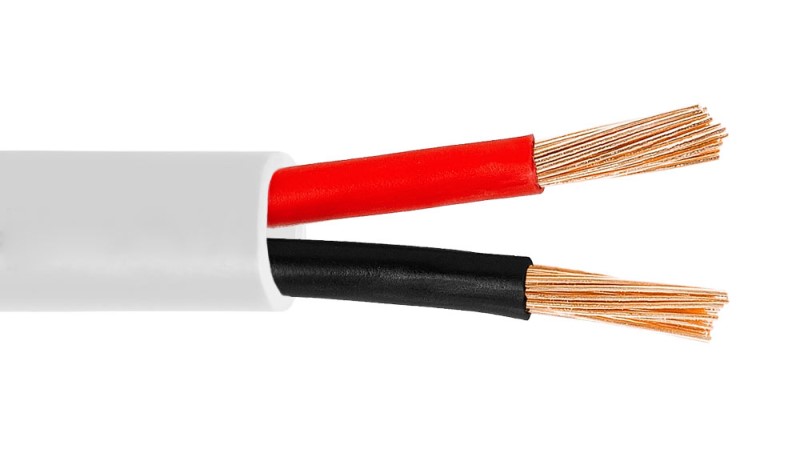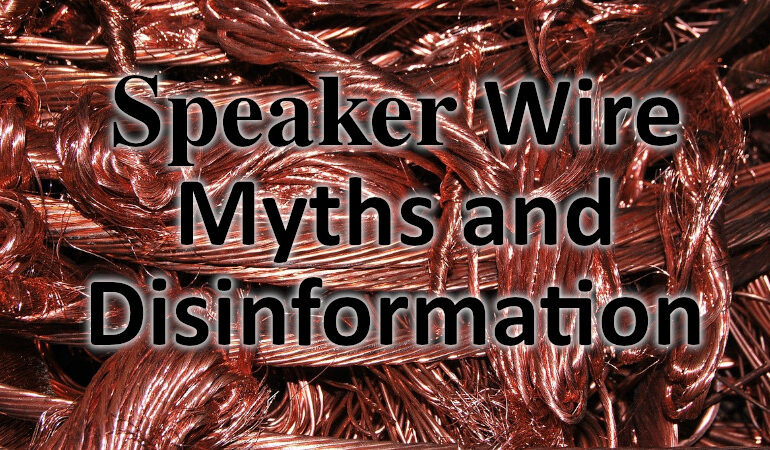Speaker Wire Myths and Disinformation
There are a lot of beliefs out there about speaker wires. Some of them are based on old worries, others are just simple faulty assumptions. Some of these are understandable. If you aren’t familiar with how electricity works, it can be very confusing. But these speaker wire myths and disinformation need to be addressed. First, let’s start with the basics.
Author’s Note: Disinformation about speaker wires is different than myths or misinformation. Disinformation is spread specifically to mislead people. This is done by companies to get you to buy their products. When you come across a speaker wire claim that seems outlandish, don’t be afraid to do some research. Many times, the claims are exactly that.
Speaker Wire Color Matters
This is the sort of speaker wire myth that permeates those that rarely have to deal with home theater systems rather than a piece of actual disinformation. When you get an all-in-one system, it will come with color-coded wires. This can lead people to believe that the color of the wire matters. It is fine for the all-in-one system, but they start to freak out a little when they try buying speaker wire from their local store.

Oftentimes, these wires have a mark on one side that may or may not be red or black. The important thing to remember is that the electricity doesn’t care what color the PVC jacket is on the wire. It only matters that you connected the black terminal on the receiver to the black terminal on the speaker. The wire color doesn’t matter.
Some Cables are Directional
There are wires that are directional. Specifically, active HDMI cables can be directional. Not because of the wire, but because the signal is getting boosted at one end. You need to connect these cables up correctly in order for them to work.
It is a myth that speaker wires can be directional – this is simply disinformation. Any speaker wires with arrows on them or claims from the manufacturer that they need to be connected in a certain way are simply false. The electricity doesn’t care which side you connect to the speaker or receiver. There is nothing someone could add to a speaker cable that would make it sound better or be directional. They are simply feeding you disinformation in order for you to feel like their cables are “special” and therefore worth more money. Save your money and buy inexpensive speaker cables. They sound the same as the expensive stuff.
You Need to Worry about the Cable Material
If you don’t pay any attention to the speaker wire you buy, you’ll either end up with copper or copper-clad aluminum wire with a PVC jacket. For nearly all applications, these cables will be perfectly fine. The sort of myths and disinformation you might come across about this speaker wire has to do with resistance. Copper has less resistance than aluminum but there are other materials (notably gold and silver) that have even less.
Don’t fall for it.
While it is technically true that the resistances are different, it will make no audible difference in your system. Unless you are running your speaker wire many hundreds of feet, all these speaker wire materials will sound the same. And while we’re on this…

Solid-Core vs Stranded-Core Wires
There is a famous experiment where someone took some high-end audiophile speaker cables and some coat hangers and did a test to see if audiophiles could tell a difference. Spoiler alert: They couldn’t. Now, we are not saying you should use coat hangers to get power to your speakers, but the point remains – the wire material makes very little difference. The solid-core coat hanger worked just as well (audibly) as the stranded-core wires. Buy the one that makes sense for your application, not because someone is telling you that one is better than the other.
Any person trying to tell you that their speaker wire is better because of its material or how it is made is preying on commonly held myths and disinformation. They want you to spend more on their cables and they’ll tell you anything they think you’ll believe to convince you. Don’t buy it (literally).
Splicing Cables Together is Bad for Sound
One very common myth is that you shouldn’t splice together cables. If you are adding length to a cable, you definitely don’t need to worry about it affecting sound (as long as you connect it correctly). But what if you have two cables that have different lengths? Can you use them on the same speaker?
Just remember, the speed of light (over 670 million miles per hour) is how fast the electricity passes through your wire. If you have one wire that is a bit (or even many feet) longer than the other, the electricity effectively still arrives at the same time. You’d literally need thousands of feet of wire to notice a difference.
This also goes for joining two cables together to make one. You’ll sometimes see four different cables in a speaker cable. Two will be feeding the red terminals, and two the black. By joining these two cables, they are effectively lowering the gauge (making the wire thicker). If the cables are all the same gauge to begin with, this lowers the gauge by three. So, if you have four 18 gauge wires and you join two pairs together to make two different wires, they will both be 15 gauge. It’s a simple and inexpensive way to run a thicker wire.
Switching Wires Can Damage Your Speakers
We’ve covered this before but let’s recap. By connecting the black terminal on your receiver to the red terminal on your speaker (and vice versa), you cannot hurt your speaker. This is a common concern (not so much myth or disinformation) about speaker wires from those that are unfamiliar with them. We can see how people might come to this conclusion, but it really can’t hurt your speakers any more than flipping your electrical plug on your appliance can. It will make them sound weird, but it won’t hurt them.
Speaker Wire Terminations are Important
We’ve talked about banana plugs before but let’s address terminating speaker wires in general. There are some that prefer one type of termination over others. But there are those that are supremely worried that if they don’t terminate their wires, something bad might happen. That if they use a bare wire connection, the wires will rust or corrode or something.
Unless your wires are on a boat, we wouldn’t worry about it.
Most discoloration of wires is harmless. Rust can increase resistance but it usually only in great amounts. If you are really worried about rust and corrosion, you can add some rust-resistant grease to the ends. Most of the time, this won’t be an issue.
Touching Speaker Wires can Damage your Receiver
Okay, this one isn’t so much myth or disinformation, as it is a truth about speaker wire that isn’t really true any longer. Years ago, if you had your receiver powered on and you unplugged your speakers, you had to be very careful. If you touched the ends of the speaker wire together (red and black), then you could blow the channel on your receiver. This isn’t a myth, I’ve done it before.
This is no longer true.
Every modern AV receiver from every major receiver manufacturer has protections built-in. These protections shut down the receiver (put it into “protection mode”) before the receiver can be damaged. Does this mean you can unplug your speakers without fear? I’m definitely not going to say that. Whenever I start swapping speaker wires, I power down my receiver. You should too.
Do you have any speaker wire myths or disinformation that need to be addressed? Mention them in the comments below!



Tom, that is my original image you are using at the top of your feature here. I took it in my studio and it was not sourced from SVS. You neither asked permission or gave me credit for it.
The image has been removed.